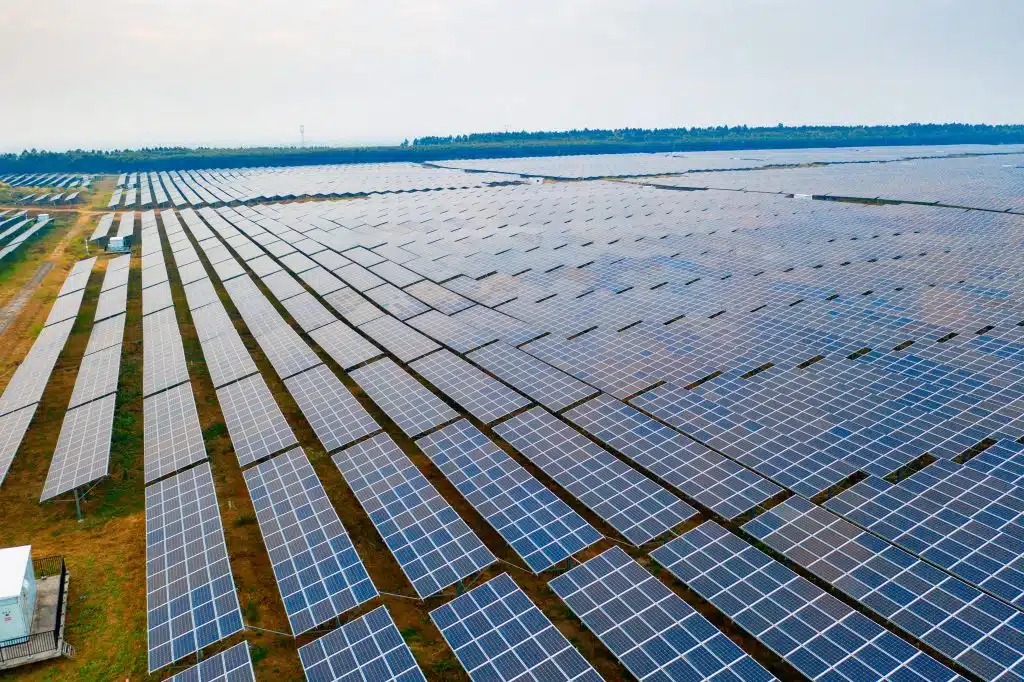

Increasing commodity prices and freight costs mean new solar projects are becoming much more expensive – consequently, solar farm operators must do all they can to protect their existing assets. In addition, the construction of solar farms is becoming an increasingly expensive business.
A report published earlier this year by the Solar Energy Industries Association (SEIA) – in partnership with Wood Mackenzie – concluded that 2021 had been a year of increasing costs for the solar industry. As a result, 2022 solar installation volumes will be impacted.
According to the SEIA/Wood Mackenzie report, consistent year-over-year and quarter-over-quarter solar price increases started in the second quarter of 2021, and this trend continued throughout the year.
The report also highlighted how year-over-year price increases for utility-scale solar reached a massive 18% for fixed-tilt projects and 14.2% for single-axis tracking projects in the fourth quarter of 2021.
Rising costs affected all segments of the industry due to rising commodity prices, higher freight costs, and shipping delays. The report stated that “it was the first year that solar system prices increased consistently year-over-year and quarter-over-quarter for every segment beginning in the second quarter.”

The solar industry price rises experienced in 2021 will have the biggest impact in 2022.
Utility solar installations this year are expected to fall by 14% compared to 2021 due to a combination of project cancelations and project delays, according to the SEIA/Wood Mackenzie report.
Worryingly for the solar industry, there is no indication that prices are going to fall anytime soon. Average system prices continue to increase due to rising equipment costs, raw material input and freight costs, as well as labor shortages. It is further discussed that prices for “commercial and utility fixed-tilt projects continue to increase as manufacturers continue to pass the cost of increased raw materials to the end user.”
With solar industry costs rising, solar farm operators need to do all they can to protect their existing assets in order to ensure they don’t have to source expensive replacements in the event a solar system is damaged. This includes protecting your solar assets using fire suppression systems and fire risk assessments.
Research has shown that the risk of fires at solar panel farms is potentially being underestimated due to under-reporting and a lack of available data. A study by the UK’s BRE National Solar Centre led to the finding that researchers “strongly suspect a degree of under-reporting, especially amongst solar farms and domestic thermal events that were resolved by a solar installer/maintenance engineer.”
When a solar farm catches on fire, it’s important to find the cause of fire. It turns out that the most complex part of a PV system is the inverters, and they manage the power that flows through them, which puts the inverters at a higher risk of fire. Though they have sensors and other safety features, there have been incidents of solar fires recorded as initiating in an inverter.
The BRE National Solar Centre study emphasized how the use of “faulty inverters” has resulted in solar-related fires. Another source found to present significant fire risk is the DC isolators and DC connectors.
While it is impossible to fully eliminate the risk of fire in solar systems, there are recommendations for actions to take to minimize the fire risks at solar farms. A study completed by TÜV Rheinland, a European testing and certification company and cited by the US Department of Energy’s Solar Energy Technologies Office suggests for actionable measure be taken to reduce risks.
They include:
Another measure that can be taken is to install fire suppression systems in components that pose a higher risk of fire like the inverters.
As OSTİM Defense and Aerospace Cluster (OSSA), we held a cooperation meeting with the Ministry of National Defense General Directorate of Technical Services. The opening remarks were delivered by OSSA Chairman of the Board, Mr. İbrahim Yarsan; ASFAT General Manager, Prof. Dr. Mustafa İlbaş; and Major General Ercan Eroğlu, General Director of Technical Services at the Ministry of National Defense. Following the opening session, experts from the Ministry of National Defense delivered informative presentations on “Introduction to MoD Military Factories” and “MoD Facility Security Clearance / Production Permit Certificate Processes.” As Nero Industry, we had the opportunity to present our products and capabilities to the MoD delegation and engage in bilateral cooperation meetings throughout the program.
*Yasal Uyarı ve Fikri Mülkiyet Beyanı:
Bu web sitesinin tamamı, metin içerikleri, grafikler, logolar, görseller, fotoğraflar, çizimler, teknik ve bilimsel çizimler, ses ve video klipleri, animasyonlar, görsel-işitsel kayıtlar, yazılımlar, kaynak kodlar, veritabanları, tasarım unsurları, kullanıcı arayüzü bileşenleri ve diğer tüm teknik ve yaratıcı materyaller ile bunlara ilişkin tüm fikri ve sınai mülkiyet hakları dahil ancak bunlarla sınırlı olmamak üzere NERO Endüstri Savunma San. A.Ş.’nin veya usulüne uygun olarak yetkilendirdiği lisans sahiplerinin münhasır mülkiyetindedir. Söz konusu içerikler; Türkiye Cumhuriyeti mevzuatı, özellikle 5846 sayılı Fikir ve Sanat Eserleri Kanunu, Türk Ticaret Kanunu, Türk Ceza Kanunu ile Türkiye Cumhuriyeti’nin taraf olduğu uluslararası anlaşmalar ve sözleşmeler, başta Fikir ve Sanat Eserlerinin Korunmasına İlişkin Bern Sözleşmesi, Sınai Mülkiyetin Korunmasına Dair Paris Sözleşmesi, TRIPS Anlaşması, WIPO Telif Hakları Anlaşması ve yürürlükte olan veya gelecekte yürürlüğe girecek ilgili Avrupa Birliği Direktifleri ve Tüzükleri kapsamında korunmaktadır. NERO Endüstri Savunma San. A.Ş.’nin yazılı izni olmaksızın yukarıda belirtilen içeriklerin tamamının veya bir kısmının doğrudan ya da dolaylı olarak, aynen ya da değiştirilmiş şekilde çoğaltılması, değiştirilmesi, iletilmesi, yayılması, yeniden yayımlanması, başka platformlara yüklenmesi, saklanması, kamuya açık olarak gösterimi ya da icrası, ticari amaçlarla kullanımı veya herhangi bir şekilde izinsiz kullanımı kesinlikle yasaktır. Bu tür fiilleri teşvik eden, kolaylaştıran ya da destekleyen her türlü eylem de aynı şekilde yasaktır. Bu hakların ihlali, ilgili fikri mülkiyet ve/veya haksız rekabet mevzuatına aykırılık teşkil edebilir ve ilgili ulusal ve uluslararası hukuk düzenlemeleri kapsamında hukuki ve/veya cezai sorumluluğa yol açabilir.
Nero Endüstri, Türkiye'nin önde gelen savunma sanayi üreticilerinden biri olarak yangın söndürme, KBRN, lazer uyarı sistemleri, sis havanı ve askeri jeneratörler geliştirmektedir.
NCAGE KODU : T9830